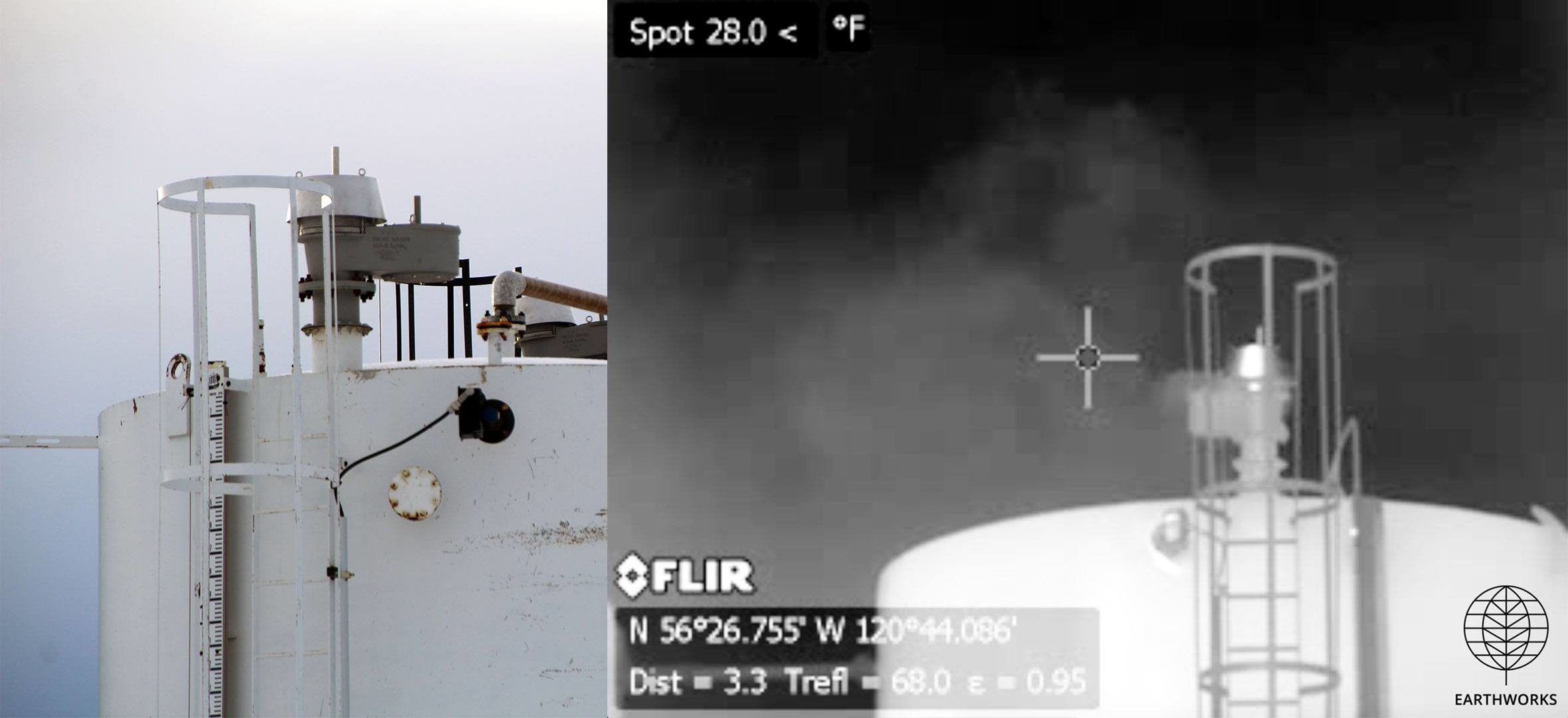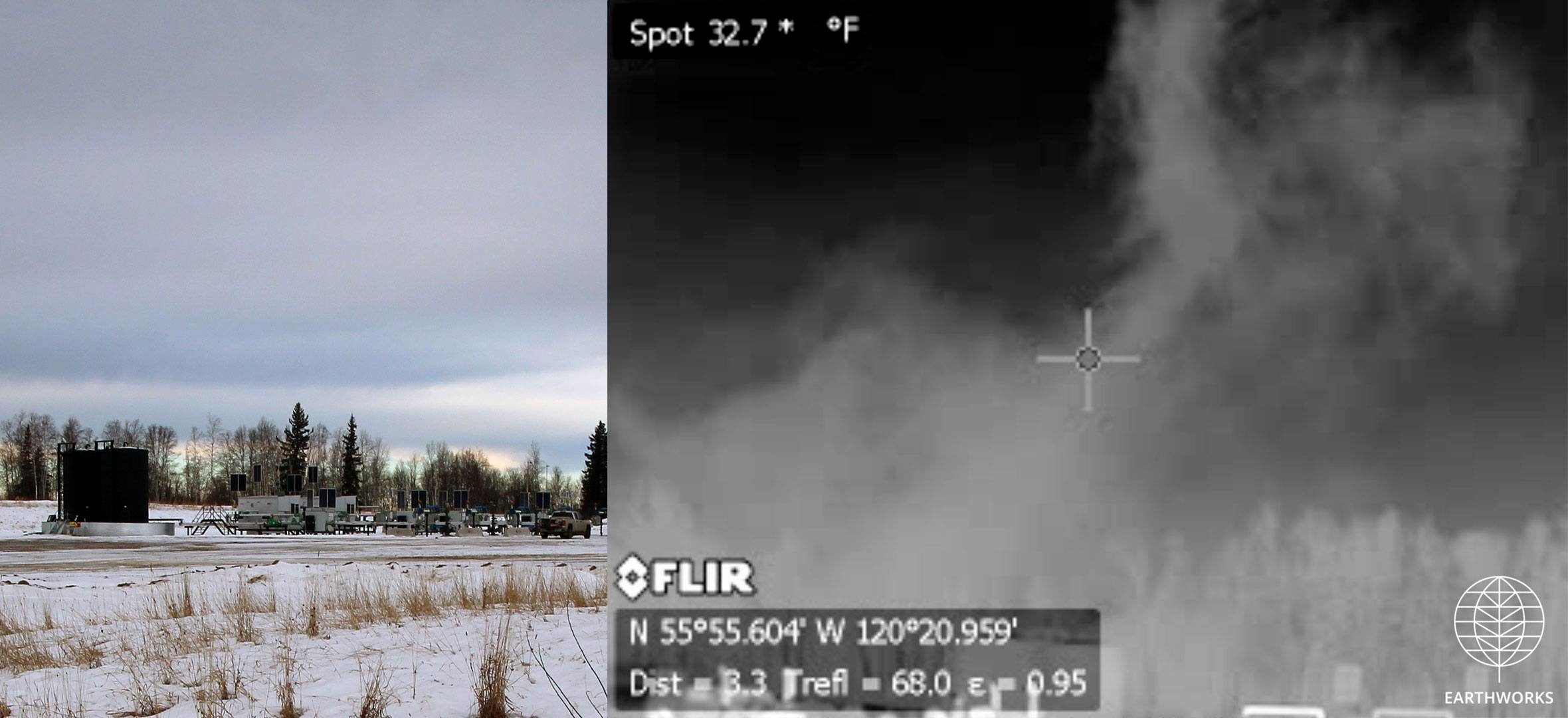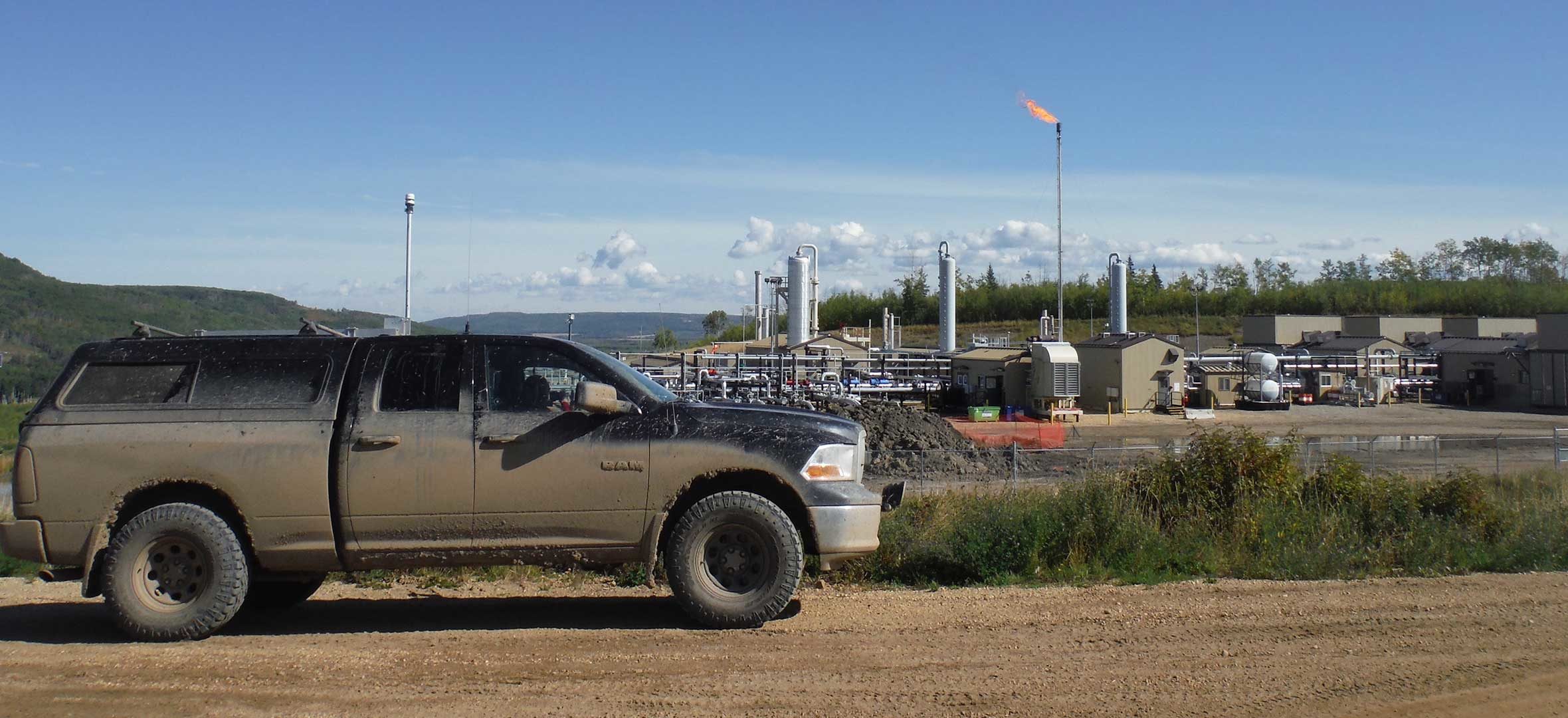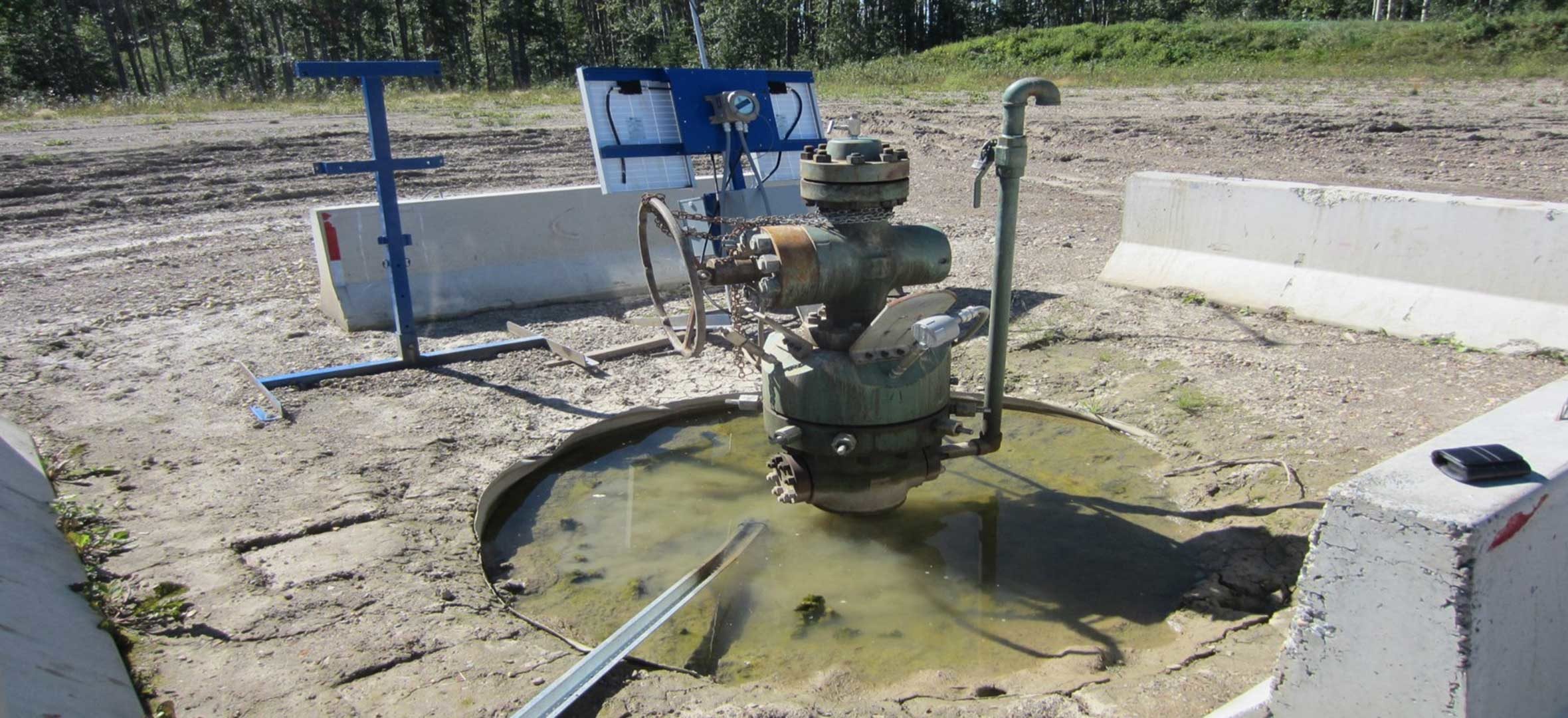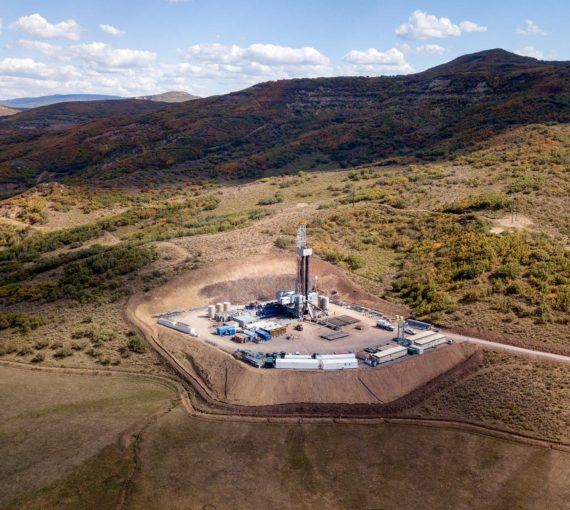Methane pollution from the oil and gas industry
Methane is a greenhouse gas that comes from a number of different sources, some natural and some human-caused.
Oil and gas drilling and hydraulic fracturing (“fracking”) operations are major sources of methane pollution, via leaks from damaged or improperly fitted equipment and intentionally vented gas.
Recent research shows that methane pollution from the B.C. oil and gas sector is at least 2.5 times greater than reported by industry and government. This challenges the claim that natural gas and LNG are “clean” transition fuels.
Methane is a dangerous greenhouse gas
Every minute of every day, Canada’s oil and gas industry leaks and intentionally vents methane into the atmosphere. It traps 84 times as much heat as carbon dioxide over a 20-year time frame. Leading scientists estimate that methane is responsible for 25 per cent of already observed changes to Earth’s climate.
According to the International Energy Agency, taking global action to reduce these emissions would have the same climate benefit by 2100 as eliminating all of China’s coal plants.
Methane metrics
84 times
Over a 20-year period, methane traps 84 times as much heat in the atmosphere as carbon dioxide.
25 per cent
Methane is responsible for 25 per cent of already observed changes to Earth's climate.
Cheap and effective
Cutting methane emissions from oil and gas is one of the cheapest, most effective ways to address climate change.
Get your climate action opinion published
A letter to the editor can foster conversations about climate change. It is a simple and effective way to raise this important issue in your community.
Making invisible methane pollution visible
Methane is invisible to the human eye but responsible for 25 per cent of already observed changes to Earth’s climate. Optical gas imaging cameras capture polluting gas wells and other facilities in the Montney Basin in northeastern B.C.
Making the invisible visible is a powerful tool for citizens to hold oil and gas companies responsible for their methane pollution problem. These images taken by Earthworks demonstrate the need for stronger regulations for B.C.’s oil and gas industry.
Expert views
A little ambition can have a major impact in cutting B.C.’s methane pollution
B.C. is in a position to set the standard for effective methane regulations. Fortunately, many of the actions needed to prevent methane from being released into the atmosphere are simple, cheap and universally beneficial.
Senior Science and Policy Analyst
Field research: Measuring the problem
In 2015 and 2016, researchers from St. Francis Xavier University and the David Suzuki Foundation completed the most thorough ground-based measurement of methane emissions ever conducted in Canada.
Scientists travelled more than 8,000 kilometres using a sniffer truck, covering more than 1,600 well pads and facilities.
This groundbreaking research revealed that methane pollution from B.C.’s oil and gas industry is at least 2.5 times higher than reported by industry and government.
Methane punches far above its weight as a climate-altering pollutant. Meaningful action on climate change is impossible without addressing the threat that methane poses.
John Werring, Former Senior Science and Policy Advisor
Opportunity for B.C. to show climate leadership
We have a short window of time to get the B.C. government to enact one of the cheapest, fastest and most effective climate solutions available today.
Right now, the provincial government is drafting methane regulations that could drastically reduce emissions of this potent climate pollutant. This is a huge opportunity for real, measurable change.
